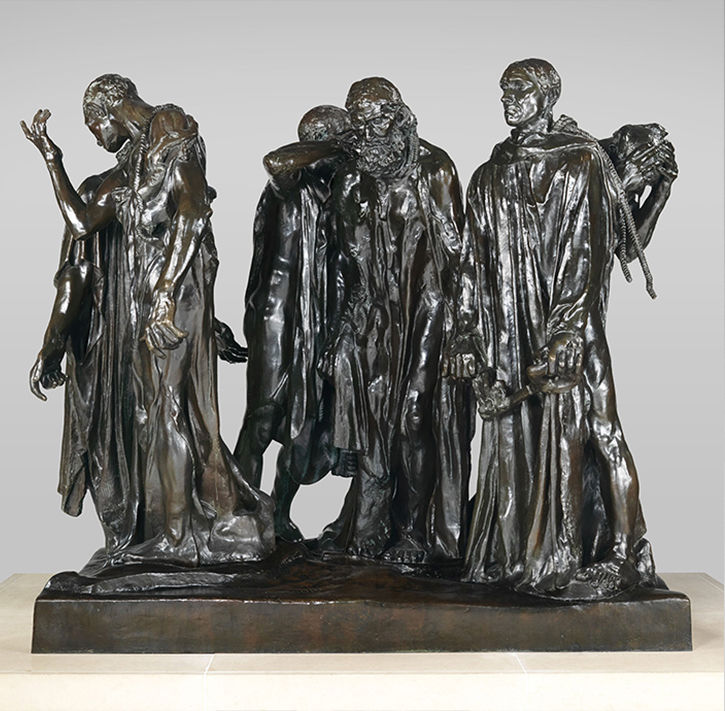The Burghers of Calais

Auguste Rodin (French, Paris 1840–1917 Meudon). The Burghers of Calais, modeled 1884–95, cast 1985. Bronze. The Metropolitan Museum of Art, New York, Gift of Iris and B. Gerald Cantor, 1989 (1989.407).
The six figures in Rodin's solemn, theatrical composition represent the leading citizens of Calais, who, in 1347, offered themselves as hostages to the King of England to end his siege of their city. Closely arranged, they sometimes touch, and yet the burghers seem isolated from each other by their unique, often energetic poses and gestures. Already modeled larger than life, Rodin heightened the figures' monumentality by enlarging their hands, heads, and feet. Rodin's ultimate desire for the original monument was to install it close to ground level, as it is displayed in this gallery, where the bronze bodies are able to best communicate to us their tension and pathos.
"If you actually get into that shape, you feel anxiety build in your body."
—Sam Pinkleton, theater director
"From a neurobiological point of view, this sculpture brings everything into play."
—Eric Kandel, neuroscientist
"You are supposed to be part of this difficult mass of humanity, to almost enter the group."
—Jim Draper, curator
All voices: Sam Pinkleton, choreographer; Jennifer Morris, actor; Quincy Tyler Bernstine, actor; Eric Kandel, neuroscientist; Jim Draper, curator; Will Crow, educator
Transcript: Collective Anxiety (Video)